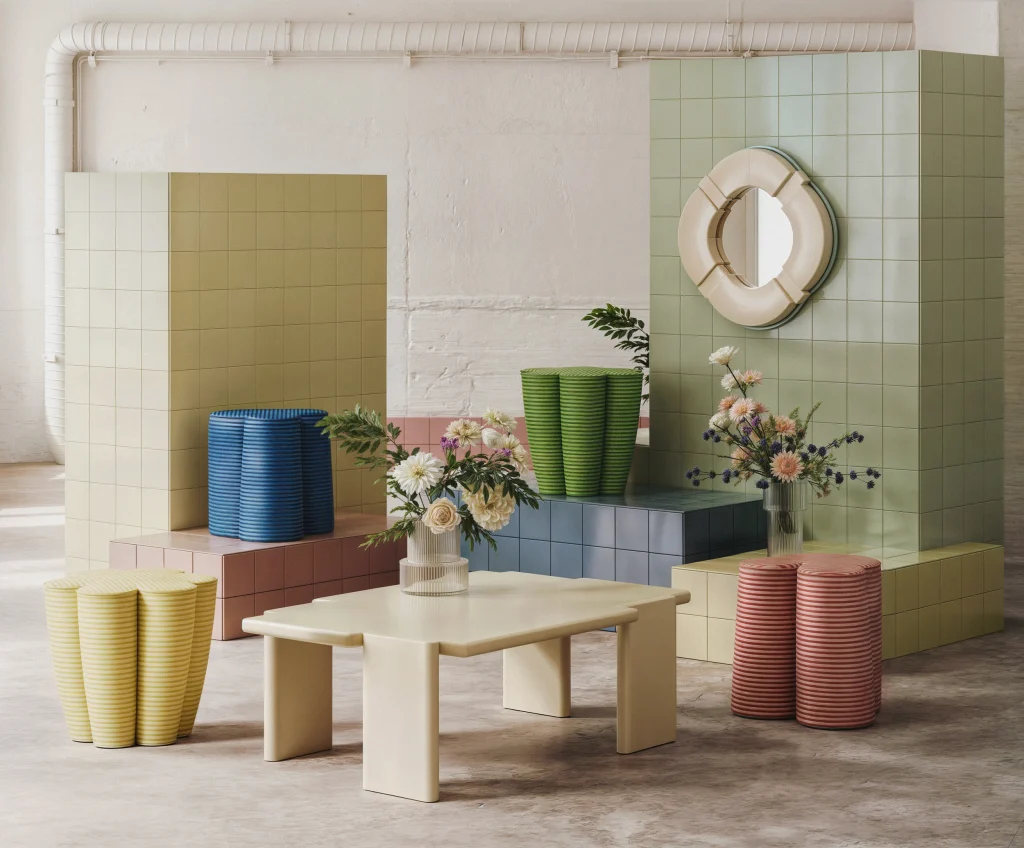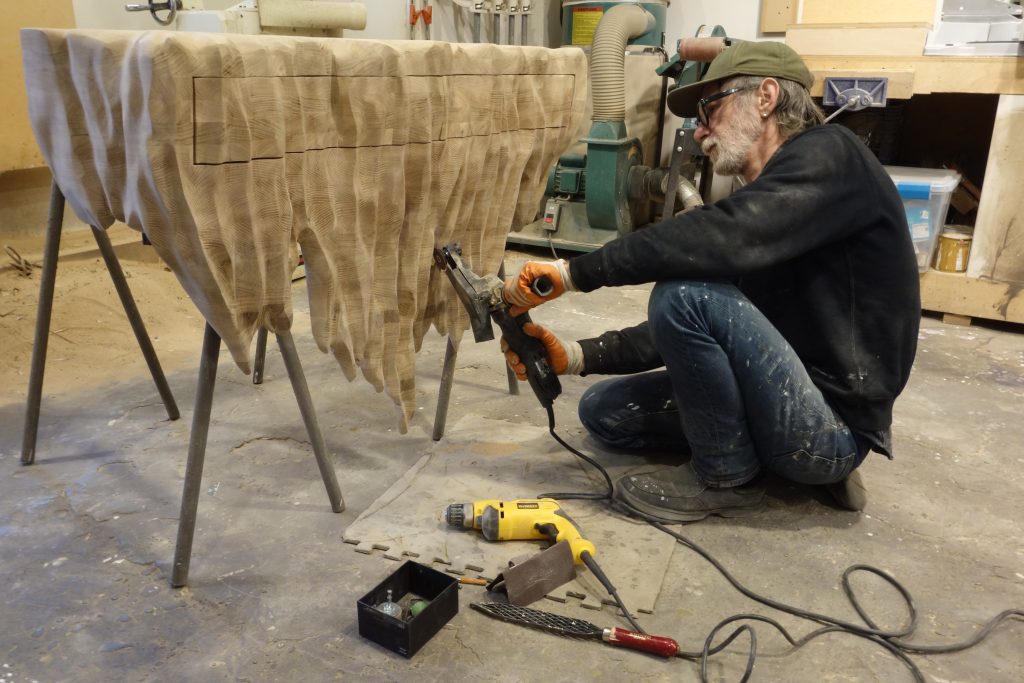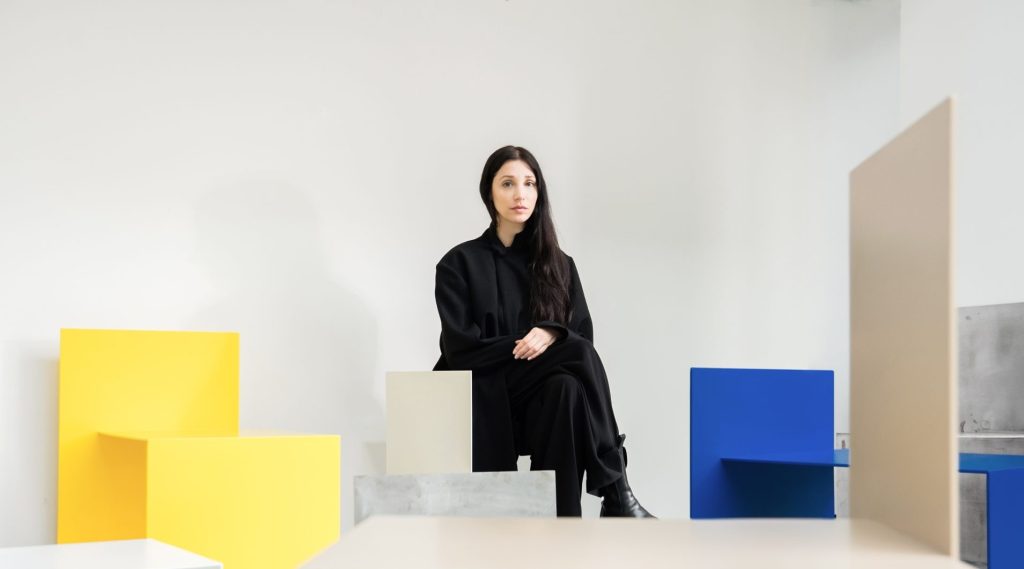"Existential Workflow" Guest edit by Charlotte Jul
The process is a vital part of the work of all designers, craft artists, and artists. No one just seems to acknowledge it. Because processes are a bit airy. A bit like working for fun. And does it even qualify as real work? This column makes an attempt to provide an insight into what it is that drives practitioners to live on the poverty line. And why the official Denmark should take more responsibility when they are still promoting themselves through “Danish Design”.
The process is a practitioner’s most important tool. The place where everything is in play, ideas are tried, and materials and possibilities are tested. As a communicator in the field for 20 years, I believe that process is the most important tool in a designer’s toolbox. It is in the process that you talk to and against your material. This is where, through a tactile approach to materials, a stack of calculations, visual sketches, technique, craft skills, craftsmanship, and an experimental approach, you gain deeply meaningful insights. This is where you as a designer talk to yourself in your creative process. Here, you try out ideas in form and material. Here, you adjust your own expectations and go to and from your idea in concrete form.
Why is process vital as a designer?
What is it that the process gives back that you cannot figure out in advance?
And why is it essential to know your materials in depth?
The above questions are not only rhetorical but deeply grounded in any designer’s practice. In my many years as a communicator, I have spoken, interviewed, and discussed with a large part of the Danish field of designers, craft artists, and artists, and common to most is a deep understanding of their material and the possibilities that come with it. It takes years to master a craft. It takes years to exhaust the possibilities of a material. And it takes years to let the link between the two create fruitful constellations, whose mission is to improve the established – be it aesthetic, functional, or metaphorical.


In Japan, people like to say that it takes 20 years to learn a craft and 20 years to make it your own. Developing your own individual signature and sharpening your understanding of and in the material, sometimes becomes a physical and intuitive extension of the practitioner themselves. It is also here that you can set yourself free from tradition. Put yourself beyond conventions and reinterpret, turn the original starting point upside down, and bring forward craft – in principle the whole context around the subject such as expectations, norms, competitors, history, present, references, etc. – to new places.
Most practitioners have an existential approach to their profession. They create from an inner necessity that is synonymous with their personal well-being – and vice versa. To create is often a personal claim that, through the presence and realisation of experience, translate into precise objects, shaped solely because the accumulated knowledge is refined through a long and creative life.
Knowledge of the material, the resistance in it, and the possibilities with it is a language that the creator has studied for years and excelled in reading, understanding, clarifying, and speaking. Many practitioners have even established their own alphabet, which they actively use and refer to throughout their lifelong work, where a work, a form, a typology becomes their letters and signature, which they push and develop anew – some for years, others in bursts. That is precisely why creating is a matter of life and death.


There are no quality-conscious artists, craft artists, or designers who create for fun. For the fun of it. Because it’s nice. That premise does not exist. Most craft artists I know have never opened a housing magazine. Not because it does not interest them, but because trends are volatile beings who have no errands in their dwelling. In their practice. In their hands. And they will most likely rather prioritise money for glaze, the right nut, or heat in their workshop.
When they create, passion, personal agendas, and preferences merge with material, craft, and history and become a unified whole that triggers meaningful satisfaction. A state of calm, energy, and perfection. When they know the curve is right. When things finally fall into place. When the result is a synthesis of precise idea, material, craft, and aesthetics. In a process of small staging points. In a connected series of large and small experiments, frustrations – and realisations. No realisations, no process. Without process, no realisations. Without process, no pieces.


But everything takes time. And diligence. And courage. Ideas, projects, techniques, materials, or collaborations must mature. Take the time they have to take. And be allowed to be at peace in that process. This is why I get annoyed when I experience that designers’ processes and practices are read as a trend that one can adapt, and not a step in a sometimes, extremely sensitive process, where one puts oneself, one’s competencies, and one’s person in insecure fluctuations. Right out there where it hurts and there is far to fall.
There is a lack of understanding of the fact that a creative workflow is a deeply serious career choice in line with the hard-working and sharp-thinking lawyer. During the initial shutdown of the Corona crisis, it was demonstrated that the vast majority of artists balance or live entirely below the poverty line. Getting paid with a bottle of wine and the joy of working with what they love??? I experience it myself when people think my writing is so good that they reuse it in different ways. Without asking for permission or crediting me for it.
Respect for professionalism and wise hands is lacking in our society, where most people buy a copy in the supermarket rather than buying original design and craftsmanship. Because they do not think about it. Because the knowledge society has become our main self-image and global currency instead of wise and competent hands. And knowledge of it. Respect for it. But, one does not exclude the other.
Processes occur in all subjects. Not only in the field of design, but this is where they are not fully recognised as vital, necessary, and worthy because only the end result is focused on. Good, not good. Sells, doesn’t sell. Process is the designer’s most important tool. To create. To be in the world. Denmark still lives off the “hype” of the great furniture designers of the post-war period, such as Hans Wegner, Børge Mogensen, Poul Kjærholm, Verner Panton, and all the other furniture architects who are relaunched in one go – and enjoy the constant respect that surrounds “Danish Design”.
Many of today’s designers also experience a global interest in Danish design, supported especially by the successful Danish-global design brands. But I miss greater support for the field from the official Denmark. Such support and prioritisation have not only real economic value but also a strong symbolic value. Nationally and internationally. It starts with respect for the process. And for the knowledge and pride that lies in wise hands.
Say it out loud:
Wise hands. Wise pieces. Wise practitioners.
Wise country that still lives by its wise designers…
Originally published in Danish by Charlotte Jul: “Eksistentiel arbejdslyst”


Charlotte Jul has worked with online communication for the past seven years. She founded the virtual showroom items.nu, which promoted and communicated design brands, makers, and artists to the media. For three years she was the editor-in-chief of the Danish online magazine designETC dedicated to elevating the standard of reviewing and portraying makers in the field of design and craft.
She recently published the book “Danish Creatives” together with photographer Nicoline Olsen. A book that aims to give readers all over the world a privileged insight into current Danish design approaches and artistic contemplations and the creative process itself, which can be both divine and grimy, back-breaking work. Our ambition is to contribute to the appreciation of curiosity and uncompromising quality and illustrate how the generations succeeding the renowned Danish mid-century modernists interpret and continue to develop Scandinavian design values today.






Responses